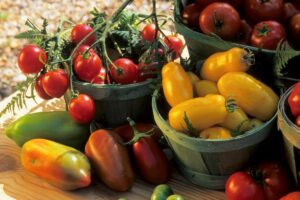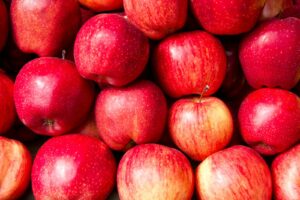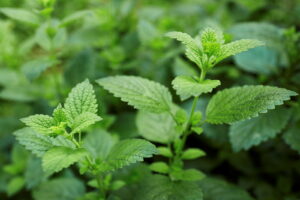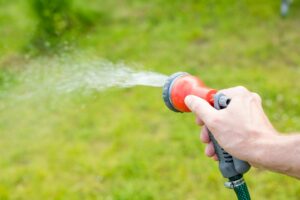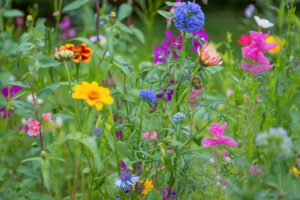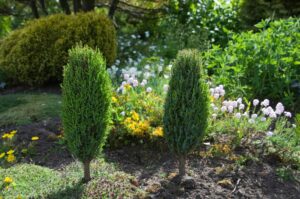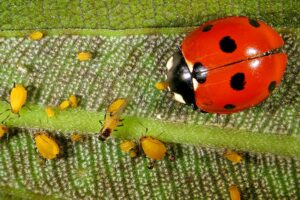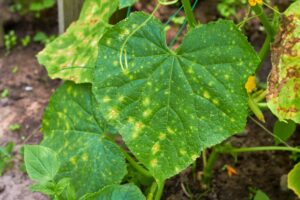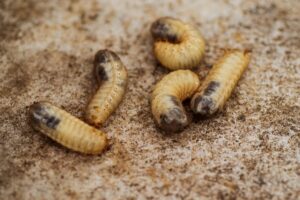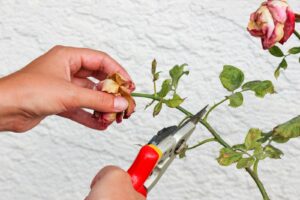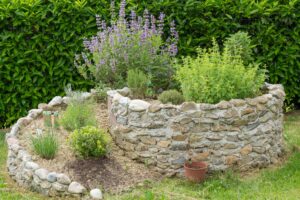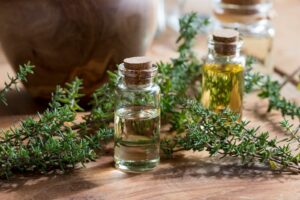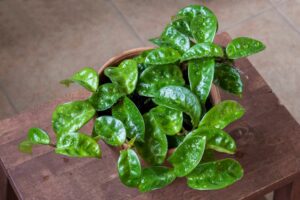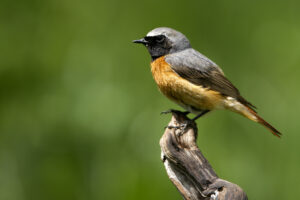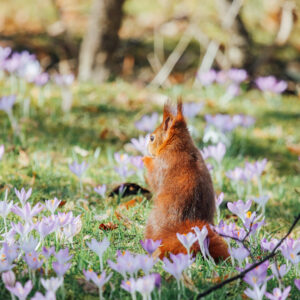Helenium: planting, propagation & care
Heleniums offer beautiful, bee-friendly flowers that bloom from mid-summer well into autumn. Find out all you need to know about planting and caring for these daisy-like perennials as well as how to grow heleniums from seed.

Flowering in warm tones of yellow, orange and red, heleniums (Helenium) are an easy way to brighten up your garden. These pollinator-friendly perennials produce countless flowers throughout the summer and well into autumn. Read on to learn more about this cheerful perennial and get tips on planting and care.
Contents
Helenium: origin and characteristics
Heleniums, commonly known as sneezeweed, are members of the daisy family (Asteraceae) that are closely related to sunflowers (Helianthus), coneflowers (Rudbeckia), echinacea (Echinacea) and zinnias (Zinnia elegans). There are about 40 species in the genus Helenium that were originally found throughout the Americas.
Heleniums are perennials that grow upright, bushy and strongly branched. Depending on the species and variety, they can reach anywhere from 40 to 160cm tall. Helenium leaves are elliptical to lanceolate in shape and grow alternately along strong stems. They have entire to slightly toothed margins.
When do heleniums bloom? Heleniums flower between May and October. The terminal flower heads consist of a rounded to button-shaped, usually dark brown centre with numerous small tubular flowers encircled by a ring of yellow, orange, red to red-brown ray florets. They are often strikingly bicoloured or multicoloured.
After pollination, elongated, notched, light brown to grey-brown seeds form, the so-called achenes. These have a small appendage of bristly hairs, known as the pappus, which helps with self-seeding.

Are heleniums bee-friendly? Yes! Heleniums are rich in pollen and nectar and flower from late summer to late autumn, making them an important food source for numerous pollinators, including bees.
Planting helenium: where, when and how
Heleniums are sun-loving perennials that like fresh to moist, loamy to loamy-humic, nutrient-rich soil. The perennial, frost-hardy shrubs are classically planted in beds, especially along borders, and the smaller annual species are ideal for planting in pots and tubs. Helenium plants do not tolerate waterlogging, so good drainage is a must in heavy soils as well as in pots.
You can grow heleniums from seed or plant them directly outdoors. Start helenium seeds indoors on a bright, warm windowsill between January and April or sow directly outdoors from June to July. Those sown early on will bloom the same year, whereas those sown later will usually not flower until the following year.

Helenium seeds need light in order to germinate, so do not cover them with soil. Instead, simply spread the seeds over moistened, nutrient-poor growing soil, press down gently and water carefully. Our Plantura Organic Herb & Seedling Compost is ideal for young plants as, being low in nutrients, it encourages healthy root development. In contrast to many conventional growing soils, our soil is entirely peat-free, making it a much more environmentally-friendly and sustainable option. Our compost-rich growing soil also comes in packaging made from 80% recycled material and is produced in Germany.
Kept at temperatures between 20 to 22 °C, helenium seeds will germinate after 2 to 3 weeks. Once the seeds have germinated, move the plants to a cooler place — around 10 to 16 °C — until they are ready to plant out. Once ready, prick them out, pot them into nutrient-rich potting soil and harden the young plants off outdoors.

- Perfect for herbs as well as sowing, propagating & transplanting
- For aromatic herbs & healthy seedlings with strong roots
- Peat-free & organic soil: CO2-saving composition
To create a lush, fiery carpet of flowers, plant your heleniums in small groups of 3 to 10 plants. Keep a plant spacing of 55 to 70cm between heleniums and other shrubs, depending on how vigorous the variety and species is. Before planting, weed the area and loosen the soil to a depth of about one spade. If necessary, improve the soil at this stage by working in some mature compost.

Next, dig a planting hole about one and a half times the size of the root ball. Carefully remove the helenium from its pot and loosen the root ball with your fingers, before placing the plant in the soil. It should sit at the same soil level as it did in its previous pot. Now fill any gaps with soil, press down lightly all around and water well. If planting your helenium in a pot or container, choose one with good drainage that can hold at least 10 litres of soil. Use a nutrient-rich potting soil, such as our Plantura Organic Flower Compost, to plant heleniums in pots. And remember to put a drainage layer of gravel, sand or expanded clay in the bottom of the pot to prevent waterlogging.
Sowing and planting heleniums
- Start on windowsill from January
- Sow directly into bed between June and July
- Spread helenium seeds on growing medium and water — do not cover with soil
- Kept at 20 – 22 °C, seeds will germinate after 14 – 21 days
- Move young plants to a cooler place (10 – 16 °C), prick them out and transplant them into a more nutritious potting soil
- Plant out shrubs in autumn or early spring; plant out helenium seedlings in summer
- Prepare the soil by loosening it and removing weeds and, if necessary, work in compost or an organic slow-release fertiliser
- Space plants 55 – 70cm apart; pot size at least 10L volume
- Dig a planting hole, plant the perennial, fill gaps with soil, then water

Companion plants for heleniums: hardy heleniums prefer to be planted alongside other summer or autumn perennials. Combine heleniums with goldenrod (Solidago), phlox (Phlox), bee balm (Monarda), globe thistles (Echinops), beeblossoms (Gaura) or larkspurs (Delphinium) for a long-lasting display of flowers. Perennial grasses such as elephant grass (Miscanthus), feather grass (Stipa) or switchgrass (Panicum virgatum) also go wonderfully with heleniums.
Plant care
Heleniums are generally considered low-maintenance plants. That said, there are a few things you will need to do to keep them healthy and blooming for as long as possible. Tall sneezeweed varieties may be susceptible to rain and wind, so you will need to tie them up or provide them with a support.
Slugs on your heleniums? Although heleniums are not prone to slug damage, you may find that the young, fresh shoots are eaten in spring. To prevent this, pick them off early in the morning or use slug barriers or slug pellets. You could even try using coffee grounds to get rid of slugs.
Watering and fertilising heleniums
Heleniums are thirsty plants that need watering regularly, especially in early summer as temperatures are on the rise. To ensure they flower abundantly, heleniums also need plenty of nutrients from the start of summer onwards. To make sure yours get enough nutrients, work some organic slow-release fertiliser into the soil at the base of the plant when planting or repotting, or in the spring at budbreak. Our Plantura Flower Food is ideal for this and will gradually release nutrients to your plants over a period of about 3 months. After this, top-up with a smaller dose of fertiliser to cover your heleniums’ nutrient requirements for the rest of the season.

- Perfect for flowering plants in the garden & on the balcony
- For healthier plants with beautiful & long-lasting blossoms
- Long-lasting fertiliser that is free from animal products - child & pet friendly
Pruning
Pruning heleniums can be done at different points of the year and at different stages of development. Cutting back the side shoots generously in May results in bushier, sturdier plants. Regularly deadheading will encourage your heleniums to produce more flowers. Once the plant has finished flowering, cut it back to the ground to promote longevity, flowering and winter hardiness.

Are heleniums winter hardy?
Yes, heleniums are hardy down to -20 °C. That said, young plants with a poorly developed root system are susceptible to frost damage. Adding a layer of leaf mulch can help protect against frost. Overwinter potted heleniums in a frost-free place or insulate the pot with some fleece or jute to prevent the root ball from freezing through.
Propagation
It is possible to propagate heleniums from seed or cuttings or by division. However, bear in mind that most shrubs are infertile hybrids that produce little to no germinable seeds. Your chances of obtaining viable seeds are much greater with non-hybrid species. To obtain seeds, do not deadhead your heleniums. Instead, leave the flowers on the plant until seeds are ripe around the end of October. Then cut the seed heads off and leave to dry indoors at room temperature for a few days. Shake to release the seeds and store in a cool, dry and dark place until you are ready to sow. However, as they are cross-pollinators, you will need to propagate heleniums by cuttings or division to obtain true-to-type plants.

As heleniums grow in clumps, dividing them is easy. Simply split the rootstock with a sharp spade and plant in a suitable location. The best time to do this is in spring after the plant has been cut back and before the shoots have sprouted. Divide heleniums every 4 to 5 years to keep the plant healthy and productive. Another way of propagating is by taking approx. 10cm-long helenium cuttings from young shoots. Remove all leaves except those from the tip and leave to root in a moist growing medium at about 20 °C in high humidity.
Are helenium plants poisonous?
No, heleniums are not poisonous and pose no danger to humans or animals. That said, if you have sensitive skin, coming into contact with the leaves may cause some irritation. In this case, it is best to wear gloves when pruning or otherwise handling the plant.
The coneflower (Rudbeckia) is another popular, yellow-flowering perennial. Learn all about this prairie plant and get tips on care and overwintering in our article on rudbeckias.
